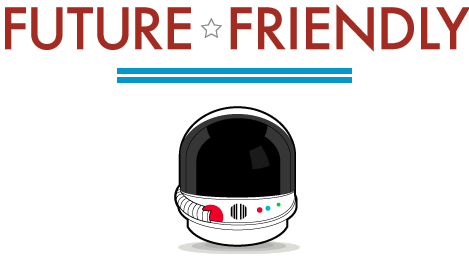

We want to make things that are future friendly. By anticipating what's next, we can react to today's concerns but also build long-term value for people and businesses. The following ideas have been on our minds recently. Help us explore them further or suggest new ones.
We can't be all things on all devices. To manage in a world of ever-increasing device complexity, we need to focus on what matters most to our customers and businesses. Not by building lowest common-denominator solutions but by creating meaningful content and services. People are also increasingly tired of excessive noise and finding ways to simplify things for themselves. Focus your service before your customers and increasing diversity do it for you.
An ecosystem of devices demands to be interoperable, and robust data exchange is the easiest way to get going. Be responsive to existing and emerging opportunities by defining your data in a way that: enables multiple (flexible) forms of access and notifications; uses standards to be interoperable; focuses on long term integrity; includes meaningful and permanent references to all content; supports both read and write operations.
Well-structured content is now an essential part of art direction. Consider how it can flow into a variety of containers by being mindful of their constraints and capabilities. Be bold and explore new possibilities but know the future is likely to head in many directions.
Highly capable smart devices, simple constrained devices, interoperable devices and (a whole lot) more are part of our future. Structure and store your content accordingly.
Reacting to every device variance makes inclusive design extremely challenging. A high-level, close-enough set of standards for device types can simplify the process of adaptation. Additional, detailed profile information can supplement these standards.
A taxonomy of device types can align manufacturers today while still allowing new devices types to emerge tomorrow.
Having a wide range of devices in our lives enables us to distribute tasks and information between them. When an experience is managed within a device collection, each device can tackle the interactions it does best. This negates the need to tailor all aspects of a service to every device and allows us to work within an ecosystem of device capabilities instead.